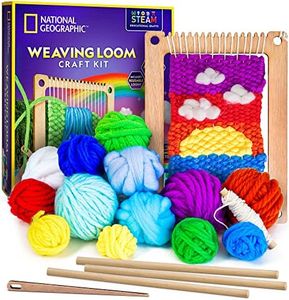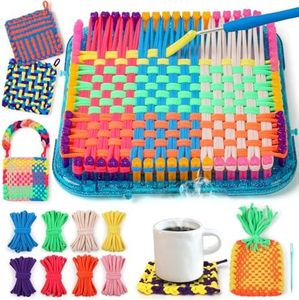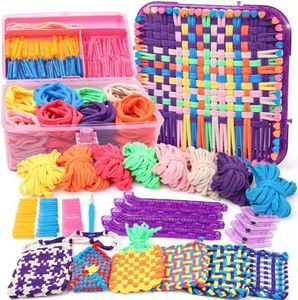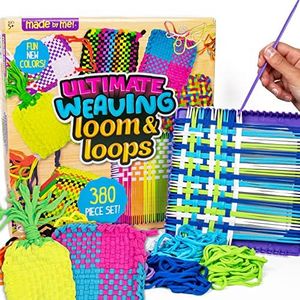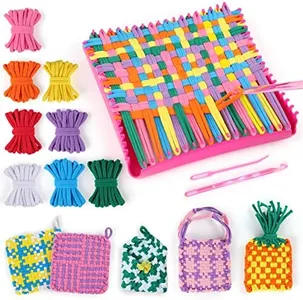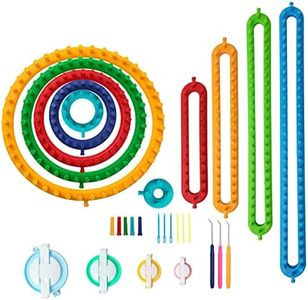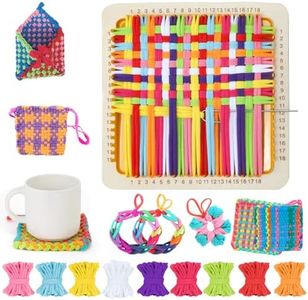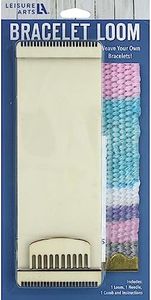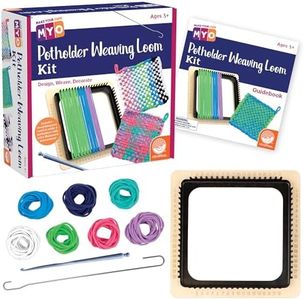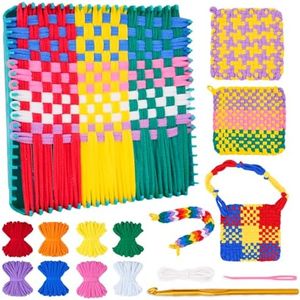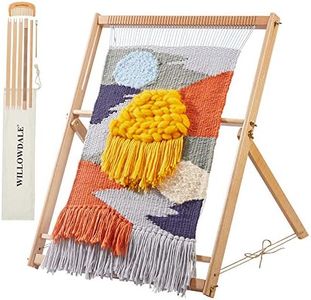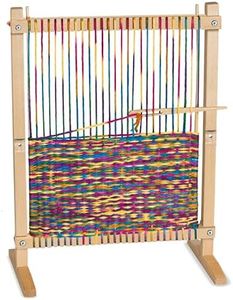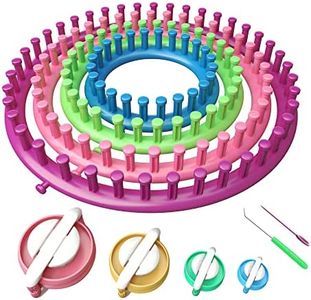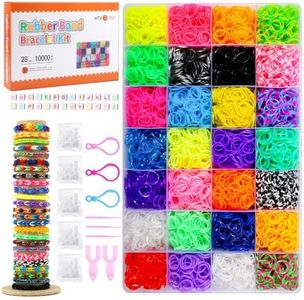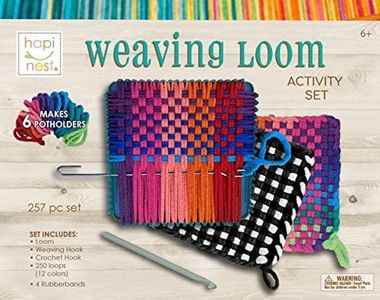We Use CookiesWe use cookies to enhance the security, performance,
functionality and for analytical and promotional activities. By continuing to browse this site you
are agreeing to our privacy policy
10 Best Beginner Looms 2025 in the United States
How do we rank products for you?
Our technology thoroughly searches through the online shopping world, reviewing hundreds of sites. We then process and analyze this information, updating in real-time to bring you the latest top-rated products. This way, you always get the best and most current options available.

Buying Guide for the Best Beginner Looms
Choosing the right loom as a beginner can be an exciting yet overwhelming experience. The key is to understand the different features and specifications that looms offer and how they align with your weaving goals. By focusing on the essential aspects, you can find a loom that suits your needs and helps you enjoy the weaving process from the start.Loom TypeLooms come in various types, such as rigid heddle looms, table looms, and floor looms. The type of loom you choose will significantly impact your weaving experience. Rigid heddle looms are great for beginners due to their simplicity and portability. Table looms offer more complexity and are suitable for those looking to explore more intricate patterns. Floor looms are larger and more complex, ideal for serious weavers who have space and are ready to invest more time in their craft. Consider your space, the complexity of projects you want to undertake, and your commitment level when choosing the loom type.
Weaving WidthThe weaving width of a loom determines the maximum width of the fabric you can create. This is important because it limits the size of your projects. For beginners, a weaving width of 15-20 inches is usually sufficient for making scarves, small towels, and other narrow items. If you plan to make larger items like blankets or wide shawls, you might want a loom with a wider weaving width, such as 24-32 inches. Think about the types of projects you are most interested in and choose a weaving width that accommodates those needs.
Number of ShaftsShafts, or harnesses, control the complexity of the patterns you can weave. A loom with more shafts allows for more intricate designs. Beginners typically start with a 2-shaft or 4-shaft loom, which is sufficient for basic patterns and learning the fundamentals of weaving. As you gain experience, you might want to explore looms with more shafts, such as 8 or more, to create complex patterns. Start with fewer shafts to avoid overwhelming yourself and gradually move to more shafts as your skills develop.
PortabilityPortability is an important factor if you plan to move your loom around or have limited space. Smaller looms, like rigid heddle looms, are lightweight and easy to transport, making them ideal for beginners who might want to weave in different locations or store the loom when not in use. Larger looms, such as floor looms, are heavier and more challenging to move, so they are better suited for a dedicated weaving space. Consider how much space you have and whether you need to move your loom frequently when deciding on portability.
Ease of UseFor beginners, it's crucial to choose a loom that is easy to set up and use. Some looms come with straightforward mechanisms and clear instructions, making them more beginner-friendly. Rigid heddle looms are known for their simplicity and ease of use, while table and floor looms can be more complex. Look for looms with good instructional materials, online tutorials, and a supportive community to help you get started. The easier the loom is to use, the more enjoyable your weaving experience will be.
Material and Build QualityThe material and build quality of a loom affect its durability and performance. Most looms are made from wood or metal, with wooden looms being more common and aesthetically pleasing. High-quality materials ensure that the loom will last longer and provide a stable weaving experience. As a beginner, you might not need the most expensive or high-end loom, but it's important to choose one that is well-constructed and reliable. Check reviews and recommendations to find a loom that balances quality and affordability.
Most Popular Categories Right Now
